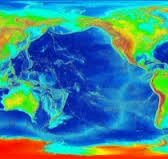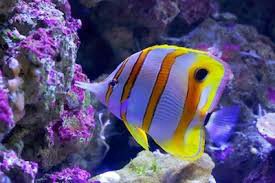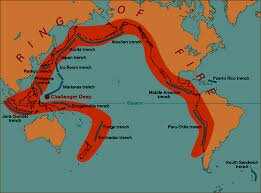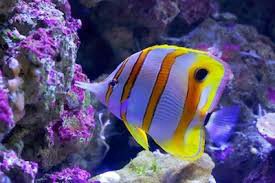RE: Amazing Facts (Ocean-Indian Ocean)
Amazing Fact of Birthday Boy.....Anil Kumble
When one talks about India’s greatest match winners in the past 2-3 decades, the first name which pops up is perhaps Sachin Tendulkar. But unanimously, Anil Kumble comes a close second, ahead of even the likes of VVS Laxman and Rahul Dravid. Ignoring the stats, it is his ability to get crucial breakthroughs when things seem bleak was one of the most revered qualities of Anil Kumble.
Steaming in like a medium pacer, Kumble was not the greatest turner of the ball. But even the most subtle of variations is enough to make a difference, and that differentiated him from two other giant spinners of international bowling during his time- Shane Warne and Muttiah Muralitharan.
Known for his fierce aggression with the ball, Anil Kumble is a sort of bowler who lets the ball talk rather than getting under the skin of his opponents with his words. And he never shies away from being expressive in the field, whether it being his disappointment on a dropped catch, or elation in getting a crucial wicket.
Advertisement
One of the most humble, yet stern players to have graced the game, he still continues to serves the game at the administration level. Aptly, one cannot take away Anil Kumble from cricket.
1. Birth:
He was born in Bengaluru, Karnataka to Krishna Swami and Saroja. His surname, Kumble, is a derivative of a surname Kumbla, tracing back his origins to Kasargod, Kerala.
2. Education:
Kumble completed his bachelor’s in Mechanical Engineering from RVCE, Bengaluru.
3. First Class debut:
Anil made his First Class debut representing Karnataka in the 1989-90 Ranji Season. He took 4 wickets and bagged a pair.
4. ODI and Test debut:
Kumble had a modest ODI debut for India, having picked up one wicket for a losing cause against Sri Lanka. Months later, he made his Test debut for India at Old Trafford, Manchester. He took 3 wickets and scored a 38. Despite his above average performance; he was dropped from the team and wasn’t picked again for 2 years.
5. International return:
Post a successful Ranji season and an exceptional performance in Irani Trophy, Anil Kumble was back into the team for the tour of South Africa. He made an immediate impact, taking his 1st 5-fer with figures of 6-53. He cemented his place with an incredible performance against the visiting England team, against whom he took 21 wickets in 3 Tests. He was declared the Man of the Series.
6. Best ODI performance:
In the hero cup final, Anil Kumble produced a spark of individual brilliance which has been one of the major aspects of his career. Chasing 226, West Indies were bundled out for just 123, with Kumble having jaw-dropping figures of 6/12. This remained the best figures by an Indian bowler till Stuart Binny broke the record after two decades.
7. Incredible county season:
Kumble played for Northamptonshire in the 1995-96 county season. Preferring to ball slower through the air and gaining more lateral turn off the pitch, Kumble had an outstanding season, picking up 105 wickets at an average of 20.40. He was one of the 5 Wisden Players of 1996, in recognition for his superlative performance as a foreigner.
8. First of three:
Kumble has passed the double-zero landmarks 6 times in his career, and the 1st time, in his 100th Test wicket, was in front of home crowd. Coincidently, he achieved two more milestones, 300th and 400th wickets, at his home ground.
9. First spinner to scale 200:
While Kumble is not explicitly known for his exploits in the shorter formats, he has one record which will go down in history. Kumble, in a match against Zimbabwe, took his 200th ODI wicket, and became the first spinner ever to take 200 wickets in ODIs back in 1998.
10. The perfect spell:
Chasing 410, Pakistan were looking dangerously comfortable, having scored 100 runs without losing a wicket, and with the dangerous Shahid Afridi still in the crease. Anil Kumble was then introduced into the attack, and the rest is history. In one of the best exhibitions of spin bowling and fine captaincy, Anil Kumble broke multiple records and became just the 2nd player ever to take 10 wickets in an innings, after Jim Laker. This gave India their first Test victory over Pakistan in 19 long years.
Also read – Top 10 Best bowling figures in Tests
11. Resolve and grit:
Against West Indies in the fourth Test of the series, Anil Kumble exhibited his grit and resolve towards his team. In spite of nursing a broken jaw, Kumble came back to bowl 14 overs with a bandaged jaw, and even managed to take the wicket of Brian Lara.
12. Match-winner down under:
While the Indian batsmen, especially Dravid and Sachin hogged all the limelight in India’s tour of Australia in 2003-04, Kumble was the silent match-winner which re-instated as India’s prime bowler in over-seas conditions. Having picked up an incredible tally of 24 wickets in 3 Tests, he was a key part of the team that went on to achieve the “golden time” of Indian cricket.
13. Another overseas masterclass:
Kumble “engineered” India’s 1st ever series win in Pakistan, having finished as the highest wicket taker in either sides in the series. Despite Sehwag winning the Man of the Series for his consistent performances, and not to forget India’s first ever triple century in the longest format, Kumble’s contribution was crucial for India’s victory.
14. Scaling the Indian Everest:
It was once thought 434 will be a number which would be not scaled by an Indian bowler for a long time. But Anil Kumble, aged 34, broke the long standing record.
15. Waning powers in ODIs:
Kumble, one of India’s best match winners in ODIs in 90s, was dropped from the team post a couple of modest performances against Zimbabwe.
16. Caught and bowled:
Kumble has been one of the pioneers of caught and bowled, and broke Muralitharan’s record for most caught and bowled in Test cricket in 2005. Though at the end of the career, both of them ended with the same number of caught and bowled wickets, Kumble’s ratio w.r.t total number of wickets taken was higher in comparison.
17. Shoulder troubles:
Since 2000, Kumble was continuously hampered by a shoulder injury incurred during fielding. And it came back with a vengeance time and again. The injury took out most of his playing time in 2006.
18. ODI retirement:
Kumble of 2000s was never the same as that of 90s, in ODIs. And after India’s disastrous performance in 2007 World Cup, he hung his boots in the shortest format.
19. Oval delight:
Kumble achieved two unique landmarks, both equally important, at the oval in 2007. Not only he went past McGrath’s record of 563 wickets, taking up the 3rd spot in most wickets, he also scored his first ever century in Test cricket, taking most number of matches to get to his maiden century.
20. Leader in troubles:
He famously led India in the controversial series down under. His statement- ‘Only one team was playing with the spirit of the game’ was one of the most impactful quotes of the saga. Jumbo was instrumental in India’s comeback win in Perth. He also took his 600th wicket in that Test, picking up Andrew Symonds.
21. Injury troubles and retirement:
Kumble’s shoulder injury continued to worsen, and in 2008, being aged 37, it was just a matter of time before he announced his retirement. And he retired in the return Border-Gavaskar series, at his arguably favorite venue, the Kotla.
22. Last glimpse of ‘Jumbo magic’:
Kumble floored most with his magic in the 2009 edition of IPL. In the 1st match of the season of his team RCB, he took a 5-wicket haul spending just 5 runs. He ended the season with 21 wickets and helped his team through to the final of the tournament where they lost to DC. Kumble retired from IPL in 2012.
23. As an administrator:
Post his retirement as a cricketer Anil has held various administrative offices, from the President of the Karnataka Cricket Association to the technical advisor of the BCCI and the ICC.
24. Team India coach:
In June 2016 Anil Kumble has been appointed as the head coach of the Indian team for the term of a year. He beat Ravi Shastri, Pravin Amre and others in the race to take over as the next coach.
23 Facts about Anil Kumble- the Jumbo match winner






 shy
shy